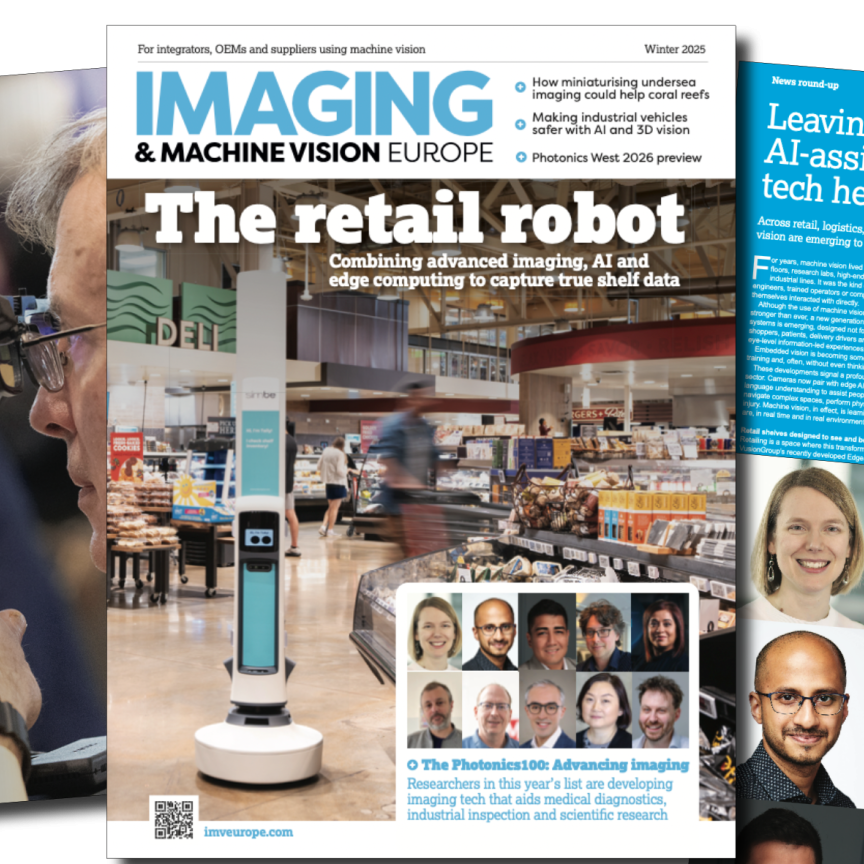Retailers are using complex vision analytics to track shoppers, from entering a store to the point of purchase. RetailNext’s Mark Jamtgaard spoke at the Embedded Vision Summit about an embedded system for just such a purpose. Greg Blackman reports
Retailers have always counted the number of shoppers entering their stores, but with advances in vision technology retailers now have masses of data available to them about their shoppers and their buying habits.
RetailNext, a provider of analytics for retailers, has developed an embedded vision system with onboard image processing for its clients, which the firm’s director of technology, Mark Jamtgaard, spoke about during the Embedded Vision Summit in Santa Clara, California in May.
The company began installing the system in April 2016 in stores across 30 countries. The camera contains a Qualcomm chip, and was developed through a design centre willing to work with small companies. The design centre’s business model worked well for RetailNext, according to Jamtgaard – the centre was able to modify existing hardware designs and provide development boards to jumpstart RetailNext’s software schedule. ‘We went from our initial requirements to our prototype hardware in less than four months, which I think is pretty spectacular,’ Jamtgaard said.
The first place RetailNext installs a camera is above the entrance to the store for people counting, among other uses. The figures are the basis of operational metrics that are important to retailers, according to Jamtgaard – a conversion metric can be calculated, for instance, to know, of the people coming into the store, how many buy things? This metric is used to compare stores across a chain.
RetailNext also aligns the store staffing levels to the density of the shoppers to maximise the purchasing conversion rate.
‘These numbers are vital to retailers,’ Jamtgaard remarked. ‘They really want 100 per cent accuracy.’ He added that the industry standard to achieve that accuracy is using stereo cameras.
The company might install a camera inside the store with a telephoto zoom pointed at the entrance to capture people’s faces. This gives face detection and classification for determining age and gender; shoppers can then be segmented and analysed according to the time of day or the day of the week. This is important for merchandising.
A camera is also placed over the checkout counter. Retailers are interested in queuing and how long staff take to serve each shopper, Jamtgaard noted. The camera is also for loss prevention – it ties each point of sale transaction to a video clip, and uses computer vision to determine whether there was a shopper present at a transaction or whether a member of staff rang in a false transaction and took the money.
At the upper end of the analytics spectrum, RetailNext can position cameras throughout the store, and stitch images to track people moving across cameras. From this, the retailer knows what department a shopper visited, what fixtures they interacted with, and where shoppers stop and for how long, Jamtgaard said. ‘When this starts to become exciting is when we start to combine these tracks with other data,’ he added. So, for example, retailers can find out where males go in the store versus females, and the path of people matched to what items they buy. The most common paths through the store can be determined, and RetailNext’s experts can work with the retailer to optimise the layout of the store.
RetailNext can also give a Bluetooth beacon to employees and track them wirelessly through the store. This can then be combined with the video tracks to see when an employee and shopper come together. The retailer can then answer questions like: how long does it take an employee to greet a shopper, or does more interaction lead to larger sales or larger basket sizes?
RetailNext saw the embedded camera as ‘a vehicle for doing more sophisticated computer vision’, Jamtgaard said. ‘Retailers are asking us more detailed questions about employees and shoppers.’ One example he gave was a shoe store wanting to know every time a shopper tried on a pair of shoes, activity recognition that’s available on the camera.
RetailNext is primarily a software company; it didn’t have hardware experience before building this embedded camera, and its networking within the Embedded Vision Alliance, the organisers of the Embedded Vision Summit, helped make the project a success, Jamtgaard remarked.
He added that, every retailer wants to know the number of people at the door, but tracking the shopper from the door to their path of purchase is a lot of data. ‘We’re getting a few customers that want to deploy it in all their stores,’ he said, where the retailer can absorb at least pieces of the data.

